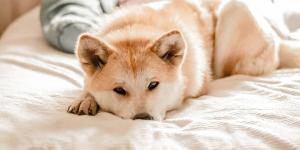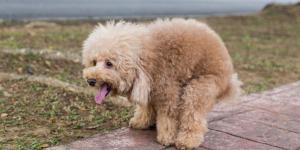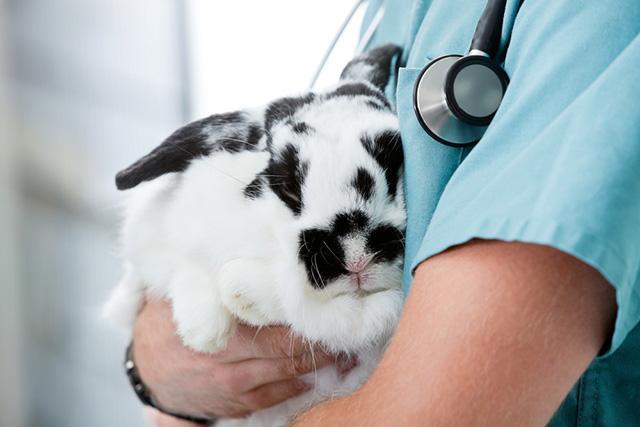Rabbit Hairballs - Symptoms and Treatment

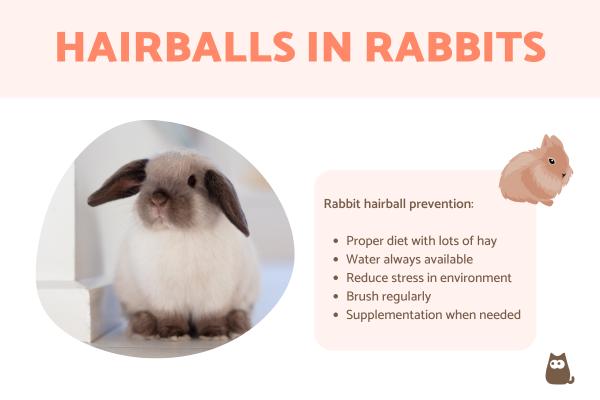

See files for Rabbits
A trichobezoar is a mass of hair that is trapped inside the gastrointestinal system. More commonly known as hairballs, they are a phenomenon we most often associate with cats. This is because felines are known for their high levels of grooming. They are a problem which can similarly affect rabbits. Rabbits also carry out self-grooming, taking care of their coat for health and hygiene reasons. They also groom other members of their social group for the same purpose. This can lead to the accumulation of hair inside the digestive tract and the formation of hairballs.
When a cat has a hairball, we can see them trying to hack it up. This does not happen in rabbits. AnimalWised looks at the symptoms of hairballs in rabbits so you can find out if this is something threatening their well-being. We also look at treatment and prevention options to save them from discomfort and potential death in some cases.
What causes hairballs in rabbits?
A bezoar is any type of mass which is trapped inside the gastrointestinal system of an animal. These are usually in the form of foreign objects, although it is possible food can become impacted and form a blockage. Trichobezoars are when a bezoar is formed from hair or fur. This is why they are commonly known as hairballs.
The cause of hairball formation in rabbits is the ingestion of hair, whether it is from their own coat or those in their social group. Like cats, rabbits need to take care of their own hygiene. They do this by grooming themselves with their mouths. When they do this, it is common for loose or dead hair to come off their coat and be ingested. Most of this will pass through the GI tract and be excreted, but in some cases it can collect into hairballs.
Certain factors can increase the likelihood of hairball formation. If hygiene is poor in the rabbit's hutch, the animal will likely feel the need to groom themselves more than usual. This can increase the likelihood of developing hairballs.
Poor diet can also influence hairball formation in rabbits. Rabbits need to have an unlimited supply of hay for them to feed on. This has various benefits, including helping to maintain their teeth which never stop growing. It is also fundamental for digestion since it provides the fiber they need for gastrointestinal transit. If they do not have enough hay or some other dietary issue, it can slow this transit and influence hairball formation.
Rabbits experience something known as molting, a normal change in their coat which happens twice a year. This is usually in spring and fall when they prepare for the summer and winter seasons, respectively. During their molt, the rabbit's coat sheds the dead hair they no longer need, either to let a new coat grow in or to have less hair during the warmer months. This increased amount of shedding means they can consume more hair when grooming.
If they are stressed, a rabbit may respond by pulling their fur out. This is a response to stress which they use to try to feel secure, but it causes more problems than it solves. Ingesting more hair is one of them.
Finally, longhaired rabbit breeds are more likely to develop hairballs than those with shorthair. This is simply because they have more hair to collect in their gastrointestinal system. While we should carry out hairball prevention methods for all rabbits, we need to be particularly careful with longhaired rabbit breeds.
In addition to pulling out their hair, you can discover other signs of stress in rabbits with our related guide.
Symptoms of hairballs in rabbits
Now we know how hairballs in rabbits form, we should look at how we can tell if our rabbit has this problem. It is common to see cats hacking up hairballs from their digestive tract, usually vomiting them onto the floor. Rabbits do not do this. This is because rabbits do not have the physiological capability to vomit. In this sense, hairballs are particularly dangerous for rabbits because they are unable to get rid of them on their own.
To know whether a rabbit has a trichobezoar, we look at the symptoms of hairballs in rabbits:
- Appetite loss: the formation of the hairball and the subsequent blockage gives the rabbit serious digestive issues. The result is that they cannot eat anymore food, so they will leave their food in their dish. Rabbits are very sensitive animals, so appetite loss is a serious issue which needs addressed immediately.
- Lack of defecation: due to the impaction of the hair with food, hay fiber and other contents of the digestive tract, the rabbit will not be able to poop normally. Healthy rabbits will defecate many pellets of food throughout the day, so if this stops happening, you will know there is a problem.
- Distended abdomen: while they can vary in size, rabbits are relatively small mammals. If they have a blockage in their digestive system caused by hairballs, they will start to bloat. Especially if they continue to eat, this bloating will only increase. In some rabbits, we may be able to see this abdominal distension without having to touch them. In others, we may only feel the hairball with palpation.
- Lethargy: if a rabbit stops moving for anything other than rest or sleep, we know there is a serious problem. When the hairball blocks their digestion, the rabbit will start to shut down. They won't be able to move and may stop responding to stimuli. In these cases, the rabbit is in serious danger.
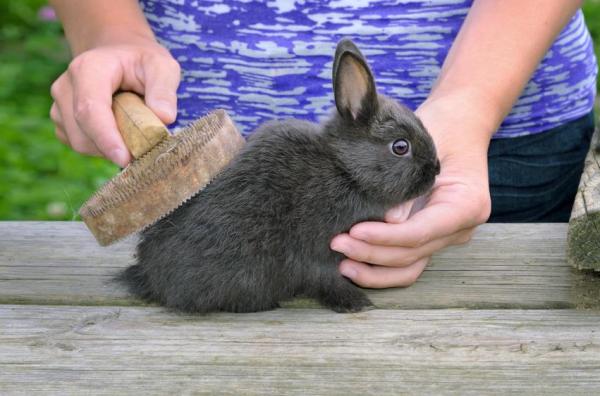
Hairballs in rabbits treatment
If you observe any of the above symptoms of hairballs in rabbits, you will need to take the animal to a veterinarian immediately. Although the symptoms above are present when rabbits have hairballs, these can also be due to other health issues. For this reason, it is vital to ensure a veterinarian examines the rabbit to diagnose hairballs. If there is a positive diagnosis, the following are treatment for hairballs in cats:
- Diet: if there is a small hairball which is not causing a blockage, it is possible a veterinarian will use dietary changes to help it move through the GI tract. This may include foods with high water content such as leaf vegetables or certain fruit. Hay is also very important for fiber, but giving more food can worsen a blockage. Only use this treatment if the veterinarian prescribes it expressly.
- Fluid therapy: hydration is very important for gastrointestinal transit. While we can encourage water drinking at home, it won't be enough to shift all hairballs. For this reason, a veterinarian can provide fluids intravenously to move the hairball along.
- Surgery: if a rabbit is showing signs of their system shutting down such as lethargy, it means the problem is very serious. In these cases, surgical removal of the hairball may be necessary. An incision is made at the closest external location of the hairball and the hairball is remove directly from the gastrointestinal tract. Unfortunately, many rabbits that reach this stage are too weak for the general anesthetic this requires.
- Medications: some drugs may be given to help increase motility in the GI tract. Hairballs can also cause gas buildup, something which may also require medication to reduce.
In certain cases, medication is required to treat secondary conditions related to the hairball. If an infection has developed, they may need antibiotic treatment. Analgesics may also be given if the rabbit is in evident pain.
How to prevent hairballs in rabbits
As we have stated, hairballs can be a serious and life-threatening problem in rabbits. While we can explain the symptoms and treatment, the best treatment is prevention. To stop a rabbit forming hairballs in the first place, you can use the following tips:
- Diet: ensure a rabbit has a proper diet that includes an unlimited supply of hay. This should include supplements such as fruits and vegetables recommended for rabbits. However, it is vital we provide them in the correct quantities since giving too much of the right food is still a problem that can influence health problems such as hairballs.
- Hydration: as we have said, poor hydration can make it difficult to pass hairballs. Ensuring we have plenty of fresh and clean water available for the rabbit is essential.
- Environment: as stress and anxiety in rabbits can influence hairball production, limiting the causes of stress is also essential. This means ensuring the social dynamic is correct, not overly manipulating them, providing environmental enrichment and meeting all of their needs appropriately. Do not let other pets intimidate them and ensure they are kept away from dangerous or stressful situations.
- Brushing: far too many rabbit guardians neglect this essential aspect of a rabbit's care. Brushing helps to remove dead hair and prevent the animal from ingesting it. While this is particularly important for longhaired rabbits, all rabbits will need regular brushing. This is especially vital during molting season.
- Supplementation: if your rabbit has a predisposition to hairball development, there may be some dietary fiber supplements that can help. However, these need to be prescribed by the veterinarian.
To best ensure you meet your rabbit's hygiene needs, take a look at our guide to the best rabbit grooming brushes.

Can I give malt paste to rabbits?
Malt paste is a product given to cats which can help lubricate their digestive tract. Other companion animals such as dogs may benefit from its use. However, malt paste is not suitable for rabbits.
The reasons why we should not give malt paste to rabbits is because they have completely different dietary requirements to cats. Malt paste is high in sugar and low in fiber. Not only will it not help in preventing hairballs, it can increase their risk by provoking digestive upset. It should be avoided at all costs. To better understand the dietary needs of rabbits, you can watch our video shared below:

This article is purely informative. AnimalWised does not have the authority to prescribe any veterinary treatment or create a diagnosis. We invite you to take your pet to the veterinarian if they are suffering from any condition or pain.
If you want to read similar articles to Rabbit Hairballs - Symptoms and Treatment, we recommend you visit our Intestinal problems category.

